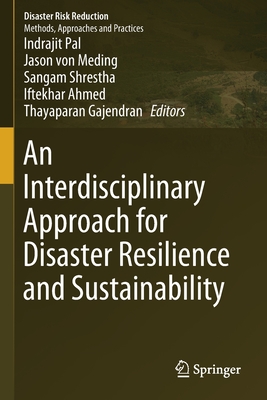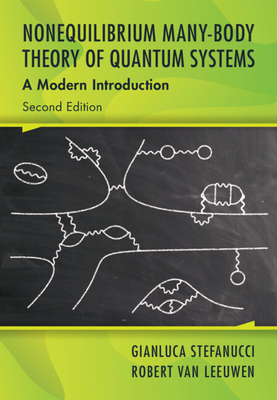图书简介
This book includes selected papers presented at the international expert forum on “Mainstreaming Resilience and Disaster Risk Reduction in Education,” held at the Asian Institute of Technology, Thailand on 1–2 December 2017. The journey towards disaster risk reduction and resilience requires the participation of a wide array of stakeholders ranging from academics to policymakers, to disaster managers. Given the multifaceted and interdependent nature of disasters, disaster risk reduction and resilience require a multidisciplinary problem-solving approach and evidence-based techniques from the natural, social, engineering, and other relevant sciences.Traditionally, hazard and disaster-related studies have been dominated by the engineering and social science fields. In this regard, the main purpose of this book is to capture the multidisciplinary and multisectoral nature of disaster risk reduction, and to gather existing data, research, conceptual work, and practical cases regarding risk reduction and its ties to sustainable development under a single “umbrella.” Along with the sustainability aspect, the book also links disaster risk reduction with development, technology, governance, education, and climate change, and includes discussions on challenges, solutions, and best practices in the mainstreaming of disaster risk reduction.
Regional Perspectives on Disaster Resilience and Sustainable Development.-Earthquake Risk Assessment in Momase Region of Papua New Guinea using GIS.-Spatio-Temporal Variability of Landslides in the Sikkim Himalaya, India.-Geo Spatial Approach for likelihood damage assessment of buildings due to seismic hazard in urbanized areas.-Perspective of Science and Technology in Disaster Management and Mitigation.-Application of remote sensing & GIS in flood vulnerability assessment - A case study of Lower Ajay Basin, India.-Stable Isotopes and Groundwater Dynamics of the Shallow Ping River Alluvial System in Kamphaeng Phet Riverbank Filtration (RBF) Prospecting Site, Upper Central Thailand.-Risk identification, Assessment and Management of a Building Information Modelling (BIM) implemented project.-Identification of arsenic hazard locations and impact on children – A case study on Baruipur Block, South 24 Parganas, West Bengal.-Effect of Changing Vegetation coverage and Metereological Parameters on the Hazard Characteristics of Indian Sundarban Region and its Impact.-The study of the Impact of Wastewater from Outfall in River Ganga, West Bengal on the Growth and Morphological Parameters of Spinacia Oleracea.-Modeling of Flood Susceptibility and Risk Assessment based on GIS and Analytical hierarchy Process-A Case Study of Adayar River Basin, Tamilnadu, India.-Hydrological Modeling of Om Chhu (River) Basin of Phuentsholing, Bhutan Using SCS-CN Method.-Sustainability, Development and Disaster Risk in Rural Water Supply, Sanitation and Hygiene in Western Nepal.-Sustainable Development through Disaster Risk Management in India: A Case Study of Chandigarh.-Integrated Strategic Environmental Assessment: Nepal’s Earthquake Reconstruction & Sustainable Development Approach Addressing Environment and Disaster Risk.-Disaster resilient and sustainable development in Nepal (issues, challenges, opportunities, an experience of sharing of Himalayan country, Nepal).-Sustainable Development Through Public Private Partnership: An Approach to Eco-Tourism Hedging Risk to Disaster with Resilience.-Forest and disaster management: a view on North-East India.-Exploring the link between the role of power and procurement and supply chain management systems performance: A case study of International Non-Governmental Organization.-Manipulating Food Preferences for Promoting Sustainability and Reducing Disaster Risk.-Socioeconomic vulnerability assessment: A Case Study of Flood Prone Urban Communities of Pakistan.-Risk Governance and Informal Sector in Disaster Recovery: Case of 2015 Nepal Earthquake.-Cottage and Small Industries in Kathmandu District in the Aftermath of Nepal Earthquake: Preparedness and Lessons Learned.
Trade Policy 买家须知
- 关于产品:
- ● 正版保障:本网站隶属于中国国际图书贸易集团公司,确保所有图书都是100%正版。
- ● 环保纸张:进口图书大多使用的都是环保轻型张,颜色偏黄,重量比较轻。
- ● 毛边版:即书翻页的地方,故意做成了参差不齐的样子,一般为精装版,更具收藏价值。
关于退换货:- 由于预订产品的特殊性,采购订单正式发订后,买方不得无故取消全部或部分产品的订购。
- 由于进口图书的特殊性,发生以下情况的,请直接拒收货物,由快递返回:
- ● 外包装破损/发错货/少发货/图书外观破损/图书配件不全(例如:光盘等)
并请在工作日通过电话400-008-1110联系我们。
- 签收后,如发生以下情况,请在签收后的5个工作日内联系客服办理退换货:
- ● 缺页/错页/错印/脱线
关于发货时间:- 一般情况下:
- ●【现货】 下单后48小时内由北京(库房)发出快递。
- ●【预订】【预售】下单后国外发货,到货时间预计5-8周左右,店铺默认中通快递,如需顺丰快递邮费到付。
- ● 需要开具发票的客户,发货时间可能在上述基础上再延后1-2个工作日(紧急发票需求,请联系010-68433105/3213);
- ● 如遇其他特殊原因,对发货时间有影响的,我们会第一时间在网站公告,敬请留意。
关于到货时间:- 由于进口图书入境入库后,都是委托第三方快递发货,所以我们只能保证在规定时间内发出,但无法为您保证确切的到货时间。
- ● 主要城市一般2-4天
- ● 偏远地区一般4-7天
关于接听咨询电话的时间:- 010-68433105/3213正常接听咨询电话的时间为:周一至周五上午8:30~下午5:00,周六、日及法定节假日休息,将无法接听来电,敬请谅解。
- 其它时间您也可以通过邮件联系我们:customer@readgo.cn,工作日会优先处理。
关于快递:- ● 已付款订单:主要由中通、宅急送负责派送,订单进度查询请拨打010-68433105/3213。
本书暂无推荐
本书暂无推荐
















